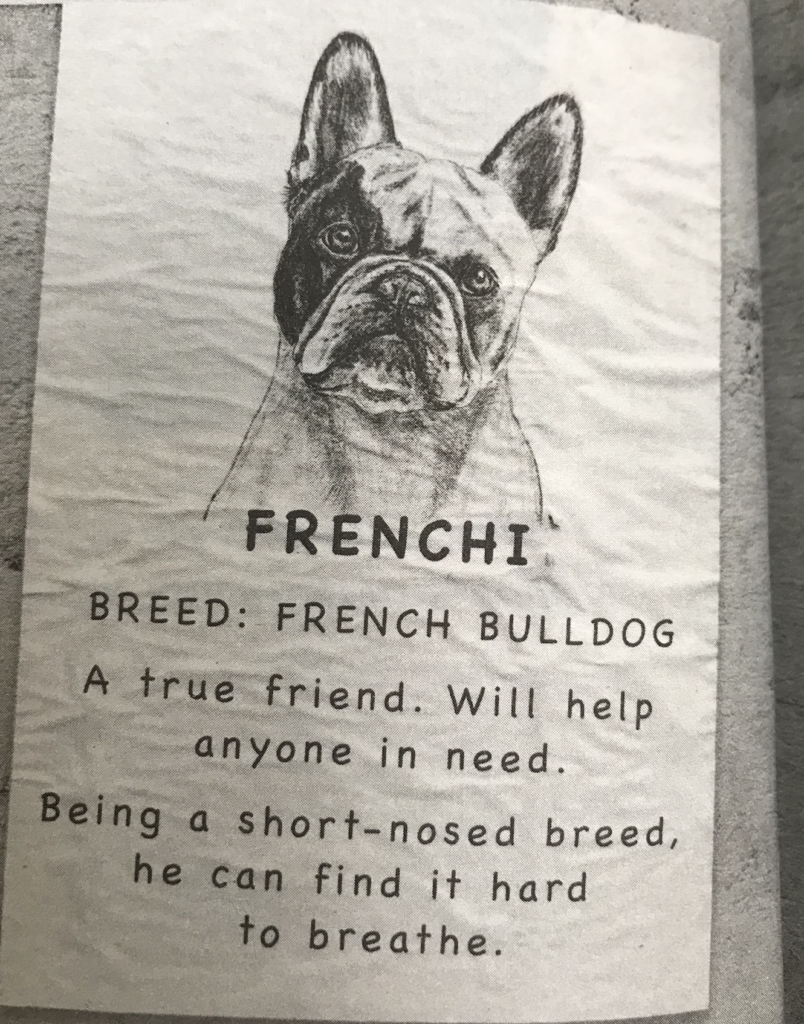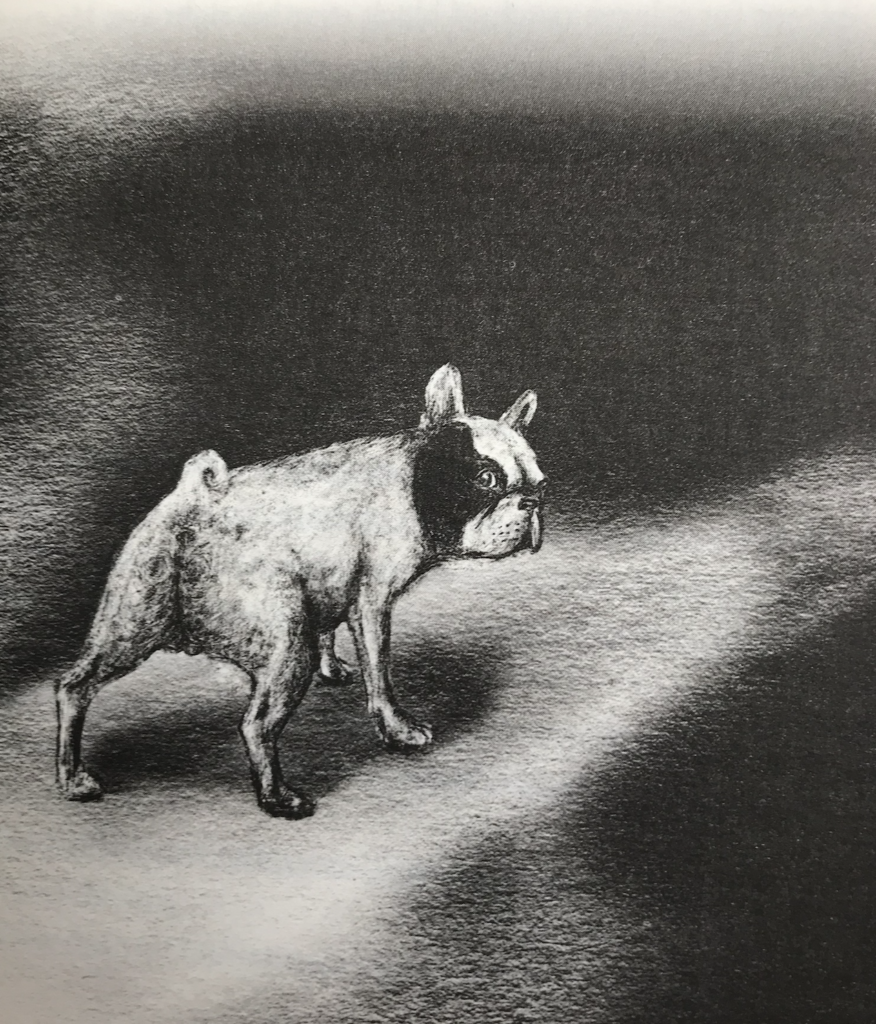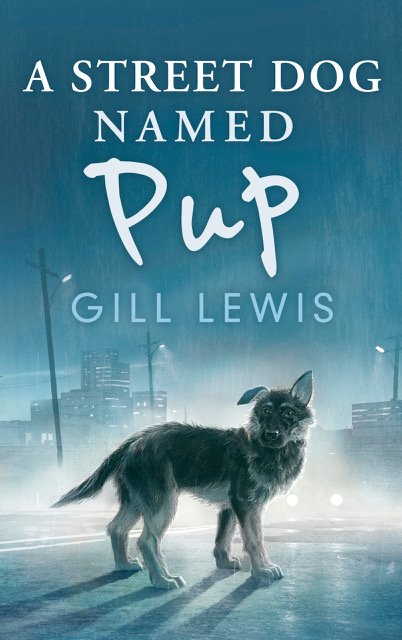The recent exponential rise in the demand for brachycephalic (flat-faced) dog breeds, is accompanied by the parallel rise in the number of health conditions associated with these breeds, fuelling a health and welfare crisis in the UK.
Many veterinary and animal welfare organisations are calling for companies to stop using these breeds in advertising to reduce the demand for these breeds and prevent the normalisation of health issues. Welfare must come before profit.
Images of short nosed breeds are very popular in children’s literature.
Is it time for the children’s publishing world to catch up with this current massive welfare issue, take a stance and stop using images of brachycephalic breeds?

We see images of brachycephalic dogs in advertising, marketing and social media, further increasing popularity of these breeds. Many people are influenced in their choice of dogs by copying celebrities who own these breeds and post pictures of them on their social media accounts.
The Breed to Breathe campaign by the British Veterinary Association states that; “society as a whole, including veterinary professionals, dog owners, breeders, registering bodies, breeds clubs, academics, animals charities and those with a commercial interest in use of dogs and their images have a moral and social responsibility to work together towards avoiding imagery of brachycephalic breeds in advertising, marketing materials and social media campaigns to reduce the demand, and prevent the normalisation of their associated health issues.”
So, my question is:
Given the huge health and welfare crisis related to the popularity of brachycephalic breeds and their inherent health problems, should we avoid the imagery and representation of brachycephalic breeds in children’s literature?
Pugs and Frenchis are cute, right? And they kind of look like cute kids, with their button noses, big eyes and flat faces. So what does it matter?
Many might roll their eyes and tell me to ‘give it a break. It’s only a story!’
But I think it does matter.
It matters a lot.
As a children’s author I’m aware of the power of words and images upon readers, and as a vet I feel that the welfare of animals is paramount and that should be reflected in the stories that we write. Children are capable of great empathy with animals, and that empathy comes from awareness, education and understanding of animal welfare issues. It is never too early to address those issues.
It’s the reason that I wrote the character Frenchi into A Street Dog Named Pup, because I wanted to show the other too-often unseen side of the health problems of flat-faced dog breeds. Frenchi is a French bulldog abandoned because his owners couldn’t afford to pay for the expensive veterinary treatment to help correct his breathing problems, and Frenchi suffers for the abnormal anatomy exhibited by short-nosed breeds. Put simply, Frenchi struggles to breathe.
What is a brachycephalic breed?
Brachycephalic, or flat-faced breeds include amongst others; pugs, French bulldogs, Boston terriers and English bulldogs. Their noses / muzzles look as though they have been flattened or squashed.
What’s the problem with a flattened muzzle?
Not all brachycephalic dogs will suffer with health problems relating to breeding, but a great many do.
Breeds with short noses have a compacted skeleton causing a number of malformations, including in the nasal cavities, the spine and their tails. But they have normal amounts of skin and soft tissue, making it therefore excessive for their compacted skeleton. They have excessive skin folds on their faces and bodies. There are excessive folds of soft tissue also present inside their bodies, causing narrowing of the airways, with resulting obstructive problems with breathing and eating.
The image on the CT images shows the comparison of normal and brachycephalic skulls
Health problems faced by brachycephalic breeds include: BOAS (Brachycephalic Obstructive Airway Syndrome) – breathing problems associated with the distorted and abnormal anatomy – narrowed nostrils, overlong soft palate and increased soft tissue in the back of the nose and throat obstructing normal breathing. These breeds often have smaller windpipe diameter. Swallowing problems due to excessive soft tissue at the back of the throat and inside the mouth. Heart problems – often secondary to chronic breathing problems. Skin problems – often due to deep skin folds. Dental problems – often due to poor conformation and overcrowding and poor alignment of teeth in the jaw. Eye problems – due to prominent eyes. Problems with mating and giving birth naturally
Some of the symptoms of disease are seen as endearing by owners. Eg: Excessive snoring some owners love to hear, can be a sign of airway disease. Some dogs will hold a toy in their mouths as they fall asleep to help keep the airway open, to ensure they can get decent sleep without waking up and gasping for air. It can appear cute to the owner, but this isn’t cute for the dog – it’s a lifesaving behavioural strategy.
Why do people love these breeds? The aesthetic appeal of these dogs is often the main reason why many love these breeds. They look ‘cute’ and this appeal is embedded in our innate human desire to nurture. These shortened noses resemble human infants to us. It’s their appeal.
How big is this problem?
It’s huge.
Vets are seeing brachycephalic breeds with their associated health conditions every day. There are dedicated teams at veterinary referral practices that specialise in diagnostic and corrective surgery approaches to help dogs with these problems.
Brachycephalic breeds demand huge sums well into the thousands of pounds. However, many owners aren’t aware that the ‘cute’ way they look can cause serious and often life limiting health and welfare problems.
Brachycephalic breeds have become increasingly popular in recent years. The Kennel Club has reported a 2747 per cent increase in the number of French bulldogs since 2004. This demand has also imposed further welfare problems around poor quality breeding practices and both legal and illegal importation of puppies to supply a booming UK demand. Lockdown has exacerbated this trend. Unscrupulous breeders and traders are cashing in on the high demand and farming them in huge numbers and poor conditions whether bred in the UK or imported from abroad.
For new owners, the realisation of the reality of owning one of these breeds, together with the waning novelty factor means many are handed over at rescue centres which further fuels a welfare concern. A Royal Veterinary College survey showed that 58% of owners of short nosed dogs did not recognise signs that their dog was struggling to breathe. These signs may include snoring, reduced exercise tolerance, sitting upright to sleep, or holding an object in the mouth to enable comfortable sleep.
The boom of popularity of these breeds and the boom of their associated health problems is one of the most pressing welfare issues for dogs in the UK right now.
What can we do?
The exponential rise in ownership and demand for brachycephalic breeds is not a problem which will be easily solved. Emotions run high. Commerce, the desire for cuteness, and tradition often fuel demand for ever shorter noses and the newer variety of colour patterns.
Some measures to change attitudes include:
Raising awareness of health problems of brachycephalic dogs – to persuade prospective owners not to choose a brachycephalic breed. This is the reason I included Frenchi in my story. I wanted readers to love him, but also empathise with him and decide against choosing this breed.
If prospective owners are set on buying a brachycephalic puppy breed, ensure they research puppies from reputable breeders. Reputable breeders try to reduce the associated health problems by screening dogs and selecting those which pass certain health tests. Breeders have had concern for new demand for variable colour pattens recently seen that may have linked health problems. For those wanting an adult dog, there are many that need rehoming from rescue shelters.
Revisit breed standards – In the Netherlands, registered dogs must have a certain nose to skull length ratio, to prevent the breed standard becoming too short. This would require dog breeding and registering bodies to implement strict regulations here in the UK.
Support Lucy’s Law – ensure legal obligations that puppies are bought direct from breeders, and not through a third party and puppy farmers.
Ultimately, I believe it will be raising awareness of the health problems of the breed that will drive down the demand for these dogs.
We can only do this if we learn to see the world through a dog’s eyes. We need to walk a mile in their paws.
We need to become the dog.
Dr Dan O’Neill – Vetcompass researcher: “It’s OK to love brachycephalic dogs. This doesn’t mean you need to own one. Loving is about us. Caring is about them. Our choices and actions define our love and caring. Become the dog, then choose your breed. Owners are the real power brokers of dog welfare.”
So how do we become the dog? – we can do it through story.
Children’s literature is powerful.
Anna Sewell, the author of Black Beauty raised awareness of the welfare concerns of horses. By letting the reader into the life of a horse allows them to understand empathy for the horse. The story led to the ban of the check-rein, a cruel rein to keep the horses’ heads bent at a curved aesthetic angle, but one which puts cruel pressure on the horses’ head and neck.
As authors and illustrators, and people in the publishing industry, I believe we can have a powerful impact upon the young readers if we talk about the ethics and welfare of animals at an early age.
We should normalise the conversation about ethics and welfare, instead of normalising a welfare problem.
This problem is so great that pet food manufactures are changing the shape of their kibble (biscuit) to ensure brachycephalic dogs don’t choke whilst eating.
We shouldn’t be changing the shape of the kibble.
We should be changing the shape of the dog.
We should be changing the conversation.
Stories allow us to have empathy for another being.
So let us imagine what it is to walk a mile in dogs’ paws.
Let’s start a conversation – and begin that first step.

Not convinced? Have a look at the Breed to Breathe campaign video here
And for more info on Brachycephalic Airway Obstructive Syndrome – here
Some useful websites and literature:
Book by Rowena Packer and Dan O’Neill – Health and Welfare of Brachycephalic and Companion Animals

A Street Dog Named Pup
Pup and his boy are inseparable. But both their worlds change forever when Pup is cruelly taken away and abandoned in Dead Dog Alley. With Nowhere else to turn, Pup joins a pack of misfit street dogs who help him learn to fight for survival on the streets. Pup holds onto the hope of one day being reunited with his boy. But as hope shrinks with every passing day, Pup begins to wonder if their bond is irreversibly broken….
Michael Morpurgo “I’m not sure I’ll ever look at a dog the same way again. Unforgettable.”
Lauren St John “A masterpiece. Gill Lewis does for Pup what Anna Sewell did for horses in Black Beauty. A wise, brave book, steeped in kindness.”